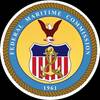UK P&I Club Advises on Safe Soya Bean Transport
Posted by Michelle Howard
April 3, 2017
Petar Modev, Senior Loss Prevention Executive at UK P&I Club, working closely with the expert consultancy CWA International, has produced a guidance on the safe carriage of soya beans.
“There have been recent reports of severe delays to trucks transporting soya beans to barges on the Amazon as a result of poor road conditions. This will have an impact on any vessels awaiting soya bean deliveries at the Northern Arc ports in Brazil through increasing the storage time prior to shipment, and increasing the likelihood of cargo claims.
“Soya beans are classified as oilseeds and contain a high oil content. The inherent quality and storability of a soya bean cargo is dependent on moisture content and temperature. As a result, soya beans can undergo self-heating during long periods of storage.
“While the moisture content and temperature of soya beans cargoes are beyond a Master’s control, there are some guidelines which a Master and his crew can follow to receive and carry a soya bean cargo to protect their interests in the unfortunate event that a cargo claim is presented against the vessel at disport.”
UK P&I advises the following:
- Hold preparation before loading - The ship’s holds should be cleaned prior to loading a cargo of soya beans. The cleanliness required for soya beans is generally regarded as one grade below hospital clean, namely “grain clean”.
- Considerations during the loading of soya beans - Clear photographs of how the cargo is delivered to the vessel as well as how it is loaded will be invaluable in the event of a claim.
- Sampling - Members can appoint a cargo superintendent to sample the cargo throughout loading, according to a representative sampling method, in order to obtain representative samples which can be assessed for cargo quality in the event a cargo claim arises. However, this is often a costly exercise so owners may wish to invite all parties to sample the cargo representatively in order to share costs.
- Heated fuel oil tanks - Prolonged exposure to high temperatures from heated bunker tanks can also lead to direct heat-related discolouration of soya beans located next to the tank. This will have a direct impact on the oil and protein quality of the beans. Ideally, soya beans should not be loaded in holds adjacent to fuel oil tanks which are likely to be heated.
- Ventilation throughout the voyage and during delays - The cargo should be ventilated in accordance with sound maritime practice and any carriage instructions provided to the vessel. Ventilation should be conducted in accordance with the fumigation instructions where applicable and when the weather/sea conditions permit. It is important to avoid wetting of the cargo.
- Discharge - The Master should instruct the crew to monitor the discharge operations carefully. This entails noting and photographing how discharge is undertaken. The quantity of spilled cargo should be noted and, if excessive, a Protest issued. Any delays that were not the fault of the vessel should also be recorded.



